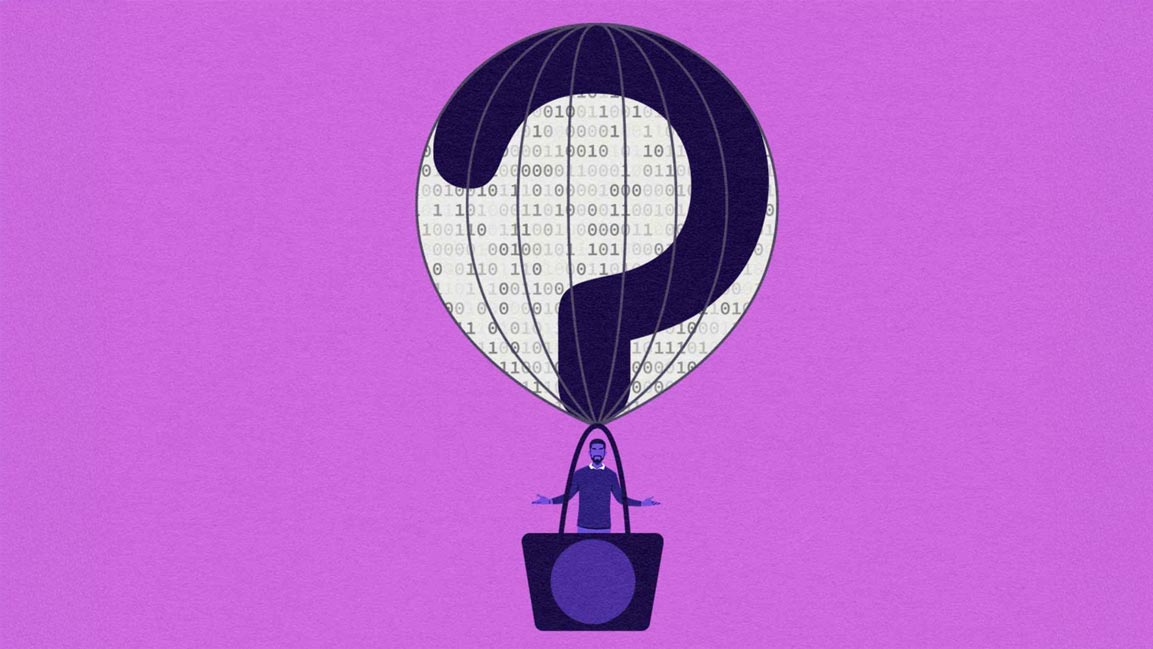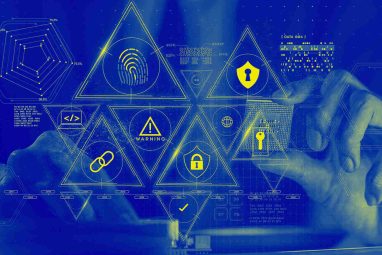What’s Your Edge? Rethinking Expertise in the Age of AI
As AI democratizes access to information, leaders should revisit ideas about hierarchy and roles — and focus on their team’s judgment and synthesis skills.
Topics
News
- UAE’s AI Ambitions Collide With Infrastructure Limits, Kyndryl Report Warns
- India Accelerator Rolls Out $15 Mn Fund for Saudi Market Expansion
- OpenAI Raises the Bar for Enterprise AI with GPT-5.2
- OpenAI Flags ‘High’ Cyber Risk as State AGs Warn Industry Over Harmful Chatbot Outputs
- Riyadh Air, IBM partner to Launch World's First AI-Native Airline
- Adobe Leans Into AI to Defend Its Creative Tech Lead in 2026

A CEO recently posed a question to me that’s been keeping executives awake: “If my junior analyst can get the same AI-generated insights as my senior strategist, why am I paying for expertise?”
It’s not hyperbole to say that we’re witnessing an unprecedented democratization of knowledge. Information that was once locked in specialized databases, consulting reports, and expert minds is now instantly available to anyone with access to generative AI and artificial intelligence tools. A startup founder in Indonesia can access strategic frameworks that once required McKinsey consultants. A nurse practitioner in rural Kansas can synthesize medical research like a specialist at Mayo Clinic.
This isn’t simply another wave of automation; it’s a fundamental restructuring of knowledge itself. Organizations that misunderstand this shift face two risks: overpaying for outdated expertise and undervaluing the human capabilities that remain irreplaceable.
The Paradox of Abundant Knowledge
When knowledge becomes commoditized, its value paradoxically shifts from the content to the context. Consider three critical transformations.
- From answers to questions: AI excels at providing comprehensive answers, but only to the questions that we know to ask. The most valuable human expertise increasingly lies in identifying unasked questions and recognizing that there are unknown unknowns. A seasoned strategist understands not only their industry’s current patterns but also its hidden assumptions and unexplored adjacencies — the white spaces that don’t yet exist in any AI model’s training data.
- From information to judgment: While AI can instantly synthesize vast amounts of information, it cannot bear the weight of consequences. When an AI system recommends restructuring your organization’s supply chain or entering a new market, the accountability remains entirely human. This gap between intelligence and responsibility creates an irreplaceable role for human judgment. Leaders aren’t paid because they can access information; they’re paid to make decisions when the stakes are real and the outcomes are uncertain.
- From static knowledge to liquid knowledge: Traditional knowledge management has treated information as a fixed asset to be stored and retrieved from knowledge repositories. But AI reveals knowledge dynamically, reshaping it based on the context, user, and moment. Each prompt generates a unique knowledge artifact tailored to specific needs. This shift from static knowledge to liquid knowledge fundamentally changes how organizations should think about subject matter expertise.
The most valuable human expertise increasingly lies in identifying unasked questions and recognizing that there are unknown unknowns.
The Cognitive Outsourcing Trap
The accessibility of AI tools like ChatGPT creates a subtle but serious risk: cognitive atrophy. We’ve seen this pattern before. GPS navigation eroded our spatial memory. Calculators diminished our capacity to perform mental arithmetic. But those were specific skills. Now we risk outsourcing human thinking itself.
Research from the University of Toronto found that using generative AI systems reduces humans’ ability to think creatively, resulting in more homogeneous ideas and fewer truly innovative ones.1 Other studies have shown that GenAI tools reduce the perceived effort required for critical-thinking tasks, with workers increasingly relying on AI for routine decisions. This raises concerns about long-term cognitive decline and diminished problem-solving capabilities.2
More concerning is the homogenization of thought. When millions of people pose similar questions and receive similar AI-generated answers, we risk intellectual convergence — a flattening of the diverse, chaotic thinking that drives innovation. Three students in my class recently submitted nearly identical AI-generated architecture proposals for their projects. Efficient? Yes. Creative? No.
The New Competitive Advantage: Meta-Expertise
Rather than making human expertise obsolete, AI is elevating what expertise means. An IESE Business School study that analyzed U.S. job postings between 2010 and 2022 found that for every percentage point increase in AI adoption at a company, there was a 2.5% to 7.5% increase in demand for management roles, with the positions emphasizing judgment and cognitive and interpersonal skills. The most valuable professionals are developing what I call meta-expertise. This is the ability to orchestrate knowledge from multiple AI systems, validate outputs, and synthesize information across domains. This requires three distinct capabilities that AI cannot replicate.
1. Creative synthesis. While AI excels at pattern recognition within existing data, breakthrough innovation comes from connecting seemingly unrelated ideas. When a pharmaceutical researcher sees a connection between a butterfly’s wing structures and drug delivery mechanisms, or an architect applies jazz improvisation principles to planning smart buildings, the creative leaps represent uniquely human cognition.
2. Contextual wisdom. The intuitive understanding humans have built through years of experience remains difficult to codify and transfer to AI systems. The experienced plant manager who senses equipment problems before sensors detect them, or the sales director who discerns unspoken client concerns, possesses contextual wisdom that transcends data patterns.
3. Ethical navigation. As AI handles more analytical work, human expertise must increasingly focus on ethical judgment, cultural sensitivity, and stakeholder management. These aren’t edge-case skills; they are central to every significant business decision. The ability to navigate competing interests, understand unspoken cultural norms, and make principled decisions under pressure remains fundamentally human.
Talent and Learning Principles to Rethink
1. Redefine Role Hierarchies
2. Invest in Cognitive Sovereignty
- •Mandating that strategic proposals include sections developed through human analysis.
- •Implementing “human thinking sprints,” where teams solve problems without AI assistance.
- •Inserting deliberate friction in certain organizational processes, like procurement, to test the cognitive fitness of employees.
3. Develop AI Orchestration Capabilities
4. Rethink Learning Programs
- Critical evaluation: Teaching professionals to assess AI outputs, identify biases, and recognize limitations.
- Creative application: Developing skills to frame problems in novel ways and make cross-domain connections.
- Ethical reasoning: Building capacity for moral judgment and stakeholder balance.
The Path Forward: Thoughtful Augmentation
Recent studies have found that generative AI technologies can outperform human CEOs in data-driven strategic tasks but fail when handling unpredictable, first-of-its-kind disruptions.4 This illustrates AI’s promise and limitations: Large language models are exceptional at pattern recognition and optimization but unable to navigate uncertainty or bear accountability for outcomes.
Then there’s the matter of innovation. Research conducted at Google identified psychological safety, not technical skills, as the single biggest distinction between innovative and non-innovative teams. This suggests that as AI handles more technical work, the human elements of trust, creativity, and collaboration become even more vital for success.
The organizations that will thrive are the ones that don’t bet entirely on AI or stubbornly preserve traditional approaches. Success lies in the thoughtful augmentation of AI for recognizing patterns, synthesizing data, and generating options while leaving the creative leaps, ethical decisions, and accountability-bearing choices to humans.
Concrete Actions Leaders Should Take
Immediate Steps
- Audit current roles to identify where AI augmentation versus human judgment alone adds value.
- Create deliberate practices that preserve human thinking capabilities.
- Establish clear accountability frameworks that maintain human responsibility for AI-assisted decisions.
Long-Term Strategies
- Redesign career paths around meta-expertise development rather than information accumulation.
- Build cross-functional teams that combine AI orchestration with functional domain expertise.
- Invest in continuous learning programs focused on creative synthesis and ethical reasoning.
Warning Signs to Monitor
- Increasing homogeneity in creative proposals.
- Overrelying on AI for routine decisions without human review.
- Seeing the ability of employees to work without AI assistance decline.
- Losing tribal knowledge as employees stop developing deep expertise.





